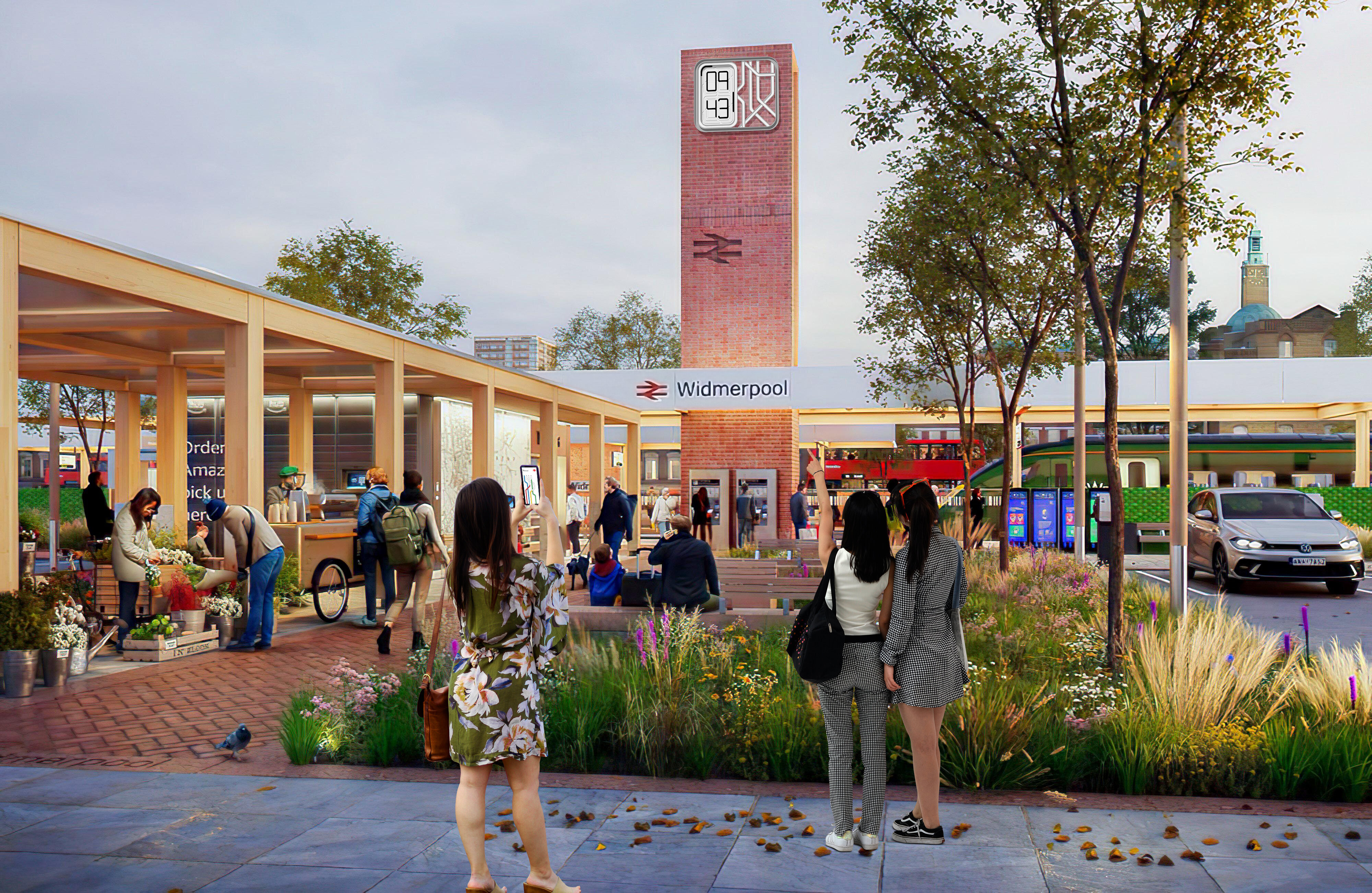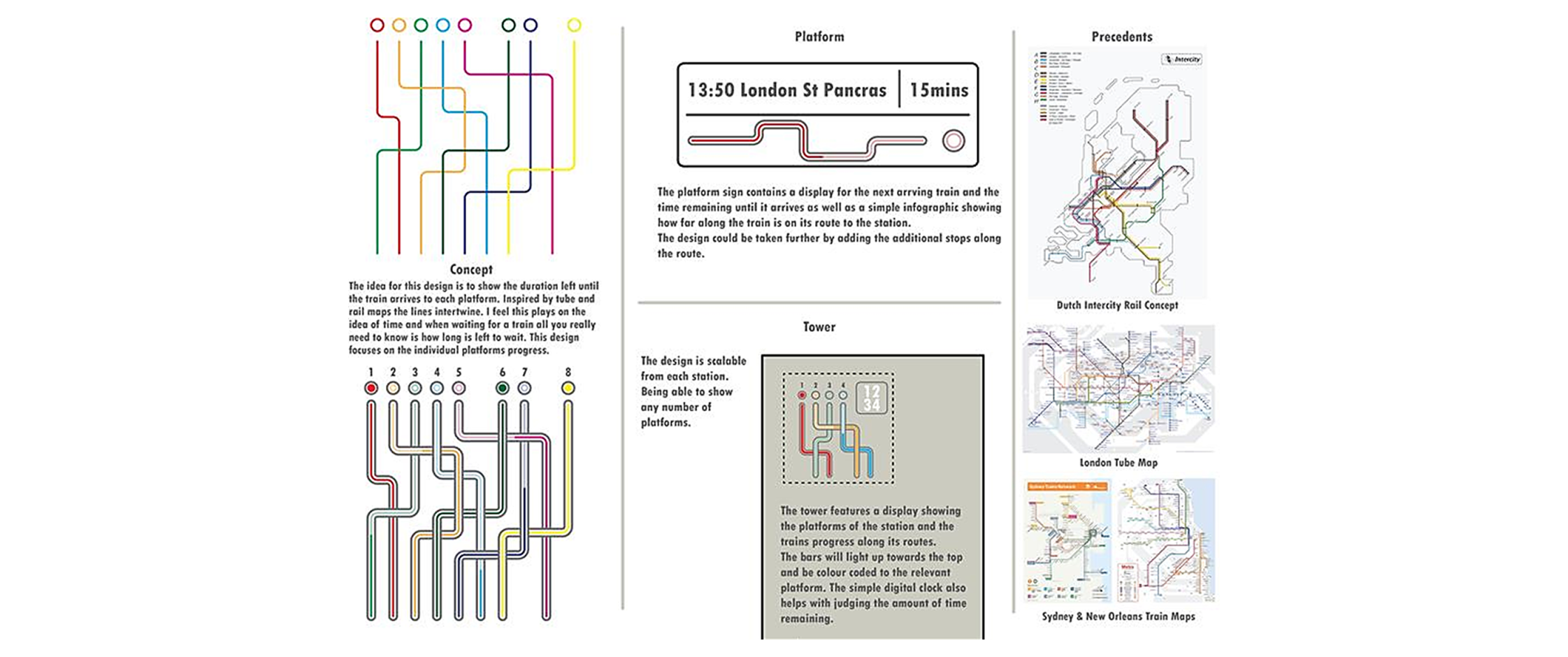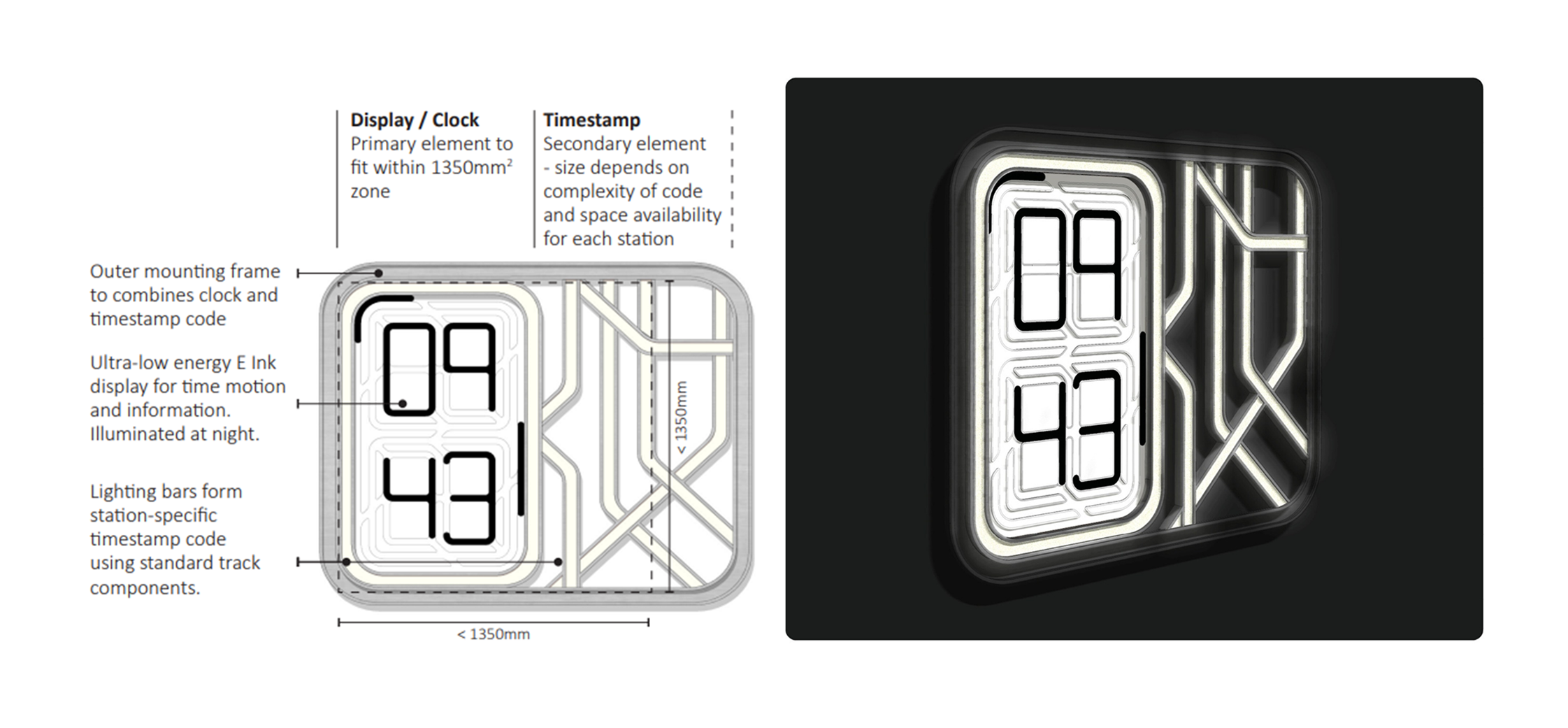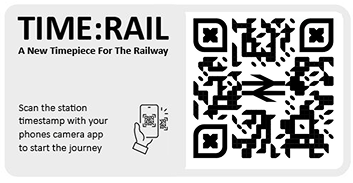TIME:RAIL a new timepiece for the railway
Network Rail - RIBA timepiece competition
Pick Everard took part in the RIBA Design Competition run in partnership with Network Rail and the Design Museum to design a new timepiece for the railway. The proposal envisions transforming railway networks into a track-based system that combines timekeeping and station information.
Our approach
Pick Everard took part in the RIBA time piece competition, entrants were tasked with creating a standardised, consistent and accessible clock design to significantly enhance the passenger experience, while reflecting the design and brand history of the railway, which marks its 200th year in 2025.
The competition sought to explore and interrogate the best way to display and communicate time across Network Rail’s across UK stations, estates and digital platforms in the 21st Century.

Our process
Following an internal mini competition within Pick Everard’s design disciplines, two ideas were selected to develop and amalgamated.
Nick Bastow’s design focused on the brief calling for, ‘the potential incorporation of interactive, experiential or playful elements as a means of ‘passing time’ could be explored’. The following concept animation was created to explain how the railway network could be reimagined as a network of time. The result is an engaging and fun timepiece that is ever changing with motion and intrigue.
Progressing with the idea that the traditional digital clock display (which creates the numbers 0-9 using a predetermined sub-grid) could be reinvented, the timepiece uses travelling ‘clock hands’ that resemble abstract trains to complete journeys around the display.
Each ‘time:train’ measures hours and minutes by the speed at which they travel around the tracks. The hour signal would be represented by the smaller ‘clock hands’ on the outer track, whereas the minutes are represented by the longer ‘clock hands’ on the inner faster track.
The grids between the outer commuting loop and the inner timepiece are interconnected by junctions to allow the moving time elements to journey to the central time platforms where they terminate. The angles used on the design were influenced by Gerry Barney’s British Rail’s double arrow logo.

Ryan Morris' design was also selected for further exploration. Ryan’s thinking stemmed from the brief calling for a timepiece that could be ‘customised in an easy and cost-effective manner to reflect place and a station’s location within the British Isles’.
The design looked at measuring the durations of time left until each train arrived at different platforms at a station, and how this could be visually represented on the timepiece.
Ryan took inspiration from the diagrammatic and colour coded underground tube and rail lines. The concept is based on the premise that time is counting down to the event of engaging with the service.
Each coloured line would be customised to the station and would clearly signal the progress of each train to the different passengers.

Combining the designs
To integrate the two designs, Pick Everard started to consider Ryan’s bespoke station pattern of platforms and services as a barcode or station ‘time:stamp’.
We were keen to move away from duplicating information that is often found on the information boards and focus on the clock feature as the primary information being read.
To do this we abstracted the ‘time:stamp’ into a symbol for each station that became ornamental when viewed but could be scanned via a smart device to provide live information about a specific station.
QR codes are actively used across Network rail for this very purpose, so the infrastructure is already established to provide live updates, station facilities, journey planning, onward travel, events & offers. These are all dependent on time-based factors so incorporating this live information into the timepiece would greatly enhance the user’s experience navigating the network through the engagement of the new timepiece.

With the emergence of AI smart devices, technology is starting to develop beyond needing tradition barcodes or QR codes, to allow bespoke formats that help to define branding and identity which was an integral part of the competitions brief. Some examples of this are Snapchat's 'Snapcode', Amazon's 'SmileCode' and Spotify's Code.
Proof of concept
Scan the QR code below with your smart phone camera to watch the clock in motion and experience the idea of retrieving platform information for a timepiece within the station.

Conceptually, the two designs came together in a literal sense with the primary timepiece including the ‘time:rail’ animation and the customised scannable station ‘time:stamp’ symbol adorning it.

Final Overview
The final competition entry envisioned transforming railway networks into a track-based system that combined timekeeping and scannable station information.
The timepiece, displayed digitally on an E-Ink screen, simulates trains arriving and departing from ‘central platforms’ where the current time is shown. In a continuous motion, time carriages loop around the display to signify a minute and an hour before transitioning numbers.
The screen also offers flexibility to present the date, station messages, and further updates.
Additionally, a “Station Timestamp” would feature a bespoke station symbol displayed alongside the clock, or individually in the station, allowing passengers to scan it with a smart device for real-time train information.
A dedicated AI app would be explored for reading timestamp codes and customising information for each station.
This integration of physical and digital elements would elevate the passenger experience of timekeeping at stations with a playful take on trains becoming the time pieces themselves.
Project team

Richard Terry
Director

Nick Bastow
Senior Architect
Key info
All projectsContact us now to chat with our team and find the right solution for your project.





